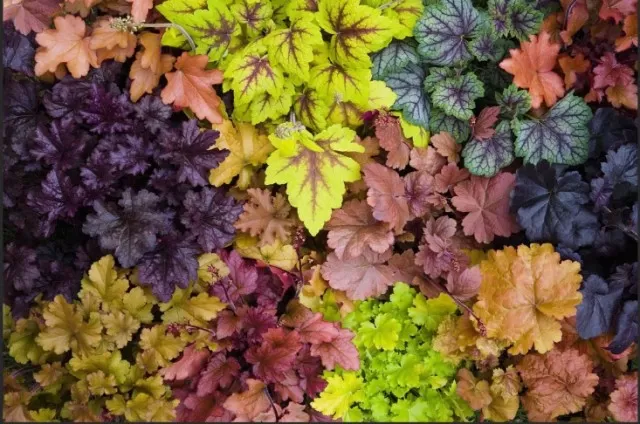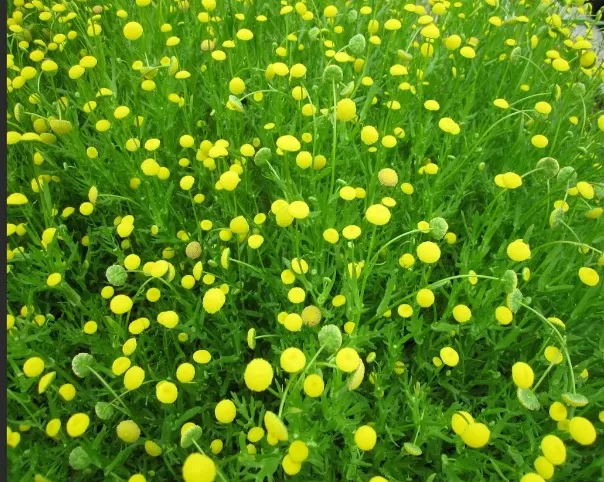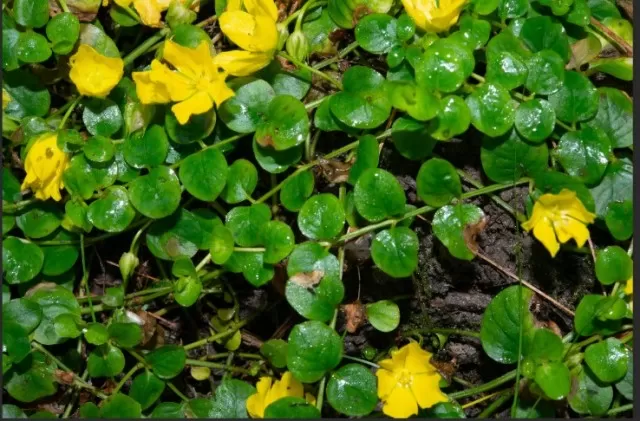Low-Maintenance Ground Cover Plants for Your Landscape.Ground covers, often underestimated in landscaping, serve a multitude of practical purposes that extend far beyond their aesthetic appeal. These resilient plants contribute to a well-maintained outdoor space by addressing common concerns such as bare spots, weed control, and erosion prevention. At the same time, they enhance your home’s curb appeal, creating a harmonious and inviting environment for all to enjoy. Ground covers are the unsung heroes of landscaping, combining both form and function to transform your outdoor space into a lush and visually appealing oasis.
Coral Bells (Heuchera): A Colorful and Resilient North American Perennial

Heuchera, commonly known as Coral Bells, is a steadfast evergreen perennial hailing from North America, celebrated for its captivating foliage that spans a spectrum from silver and green to rich brown hues.
Its substantial, heart-shaped leaves, adorned with prominent veins, reach an impressive spread of 18 to 24 inches. Most Heuchera varieties grace us with delicate pink flowers in late spring, adding a touch of elegance to their vibrant foliage.
When planted in clusters, Heuchera excels as a ground cover or makes a charming addition to garden borders.
This adaptable plant thrives in both partial shade and full sun, provided it has well-draining, consistently moist soil. Even better, Heuchera demands relatively minimal care and boasts resistance against common garden nuisances like deer and other critters.
Whether you’re an experienced gardener or a novice, Coral Bells (Heuchera) promises to bring beauty and resilience to your Outdoor Spaces.
Honeysuckle (Lonicera periclymenum): A Wildlife-Attracting Aromatic Perennial
For gardeners seeking to enchant hummingbirds, butterflies, and other captivating wildlife, the fragrant allure of honeysuckle, scientifically known as Lonicera periclymenum, is a must-consider addition.
This aromatic perennial unfurls its natural beauty with an array of blossoms in shades of white, yellow, or red during the refreshing embrace of spring and summer.
Honeysuckle is a versatile plant that gracefully ascends trellises, creating a vertical tapestry of color and scent.
Alternatively, it can serve as a charming ground cover, spreading its aromatic charm horizontally. However, it’s vital to exercise caution: the plant’s rapid growth can render it invasive in various regions, including the Eastern United States, parts of Texas, and the Southwest.
To cultivate a thriving honeysuckle, provide it with full sun exposure and maintain consistently moist soil.
Impressively, this resilient plant exhibits heat resistance, enduring even in scorching conditions. While it requires some vigilance to prevent its invasive tendencies, the rewards of Attracting Wildlife and enjoying the sweet fragrance of honeysuckle make it a beloved addition to many gardens.
Brass Buttons (Cotula coronopifolia): A Unique Ground Cover with Fern-Like Beauty

Brass Buttons, scientifically known as Cotula coronopifolia, derive their name from the striking color and shape of their flowers, but what truly sets them apart is their serrated, fern-like leaves.
Remarkably, brass buttons share a vulnerability with ferns: they are both susceptible to drought. However, when planted in well-moistened soil, these hardy ground covers thrive, forming dense, 2-inch-tall mats of lush growth that can withstand even the wear and tear of regular foot traffic.
In regions of the South or West, brass buttons may experience leaf loss or die back during the colder months.
Originating from New Zealand, this ground cover has shown invasive tendencies in some areas, although it has not spiraled out of control. In climates that are suitable, brass buttons remain evergreen throughout the year, making them a dependable and visually appealing choice for ground cover that adds a touch of fern-like elegance to your landscape.
Creeping Phlox (Phlox stolonifera): A Springtime Ground Cover Marvel
Few ground covers can rival the sheer beauty of creeping phlox when spring arrives, unfurling a dazzling spectacle of fragrant, star-shaped flowers in soft pastel hues.
This enchanting perennial reaches a maximum height of just 6 inches, making it a favored choice among gardeners who appreciate its visual splendor from multiple vantage points.
Creeping phlox is often strategically planted on slopes or atop retaining walls, allowing its stunning display to captivate onlookers.
Moreover, it serves as an elegant border along garden paths, defining the edges with its exquisite blossoms. Fortunately, this ground cover is undemanding when it comes to care, thriving in locations blessed with full sun and proper drainage.
Native to the wooded realms and stream banks of the Appalachian Mountains, creeping phlox maintains its grace while remaining easy to manage in a garden setting.
Creeping Phlox (Phlox stolonifera): A Springtime Ground Cover Marvel

Few ground covers can rival the sheer beauty of creeping phlox when spring arrives, unfurling a dazzling spectacle of fragrant, star-shaped flowers in soft pastel hues.
This enchanting perennial reaches a maximum height of just 6 inches, making it a favored choice among gardeners who appreciate its visual splendorfrom multiple vantage points.
Creeping phlox is often strategically planted on slopes or atop retaining walls, allowing its stunning display to captivate onlookers.
Moreover, it serves as an elegant border along garden paths, defining the edges with its exquisite blossoms. Fortunately, this ground cover is undemanding when it comes to care, thriving in locations blessed with full sun and proper drainage.
Native to the wooded realms and stream banks of the Appalachian Mountains, creeping phlox maintains its grace while remaining easy to manage in a garden setting.
*The information is for reference only.